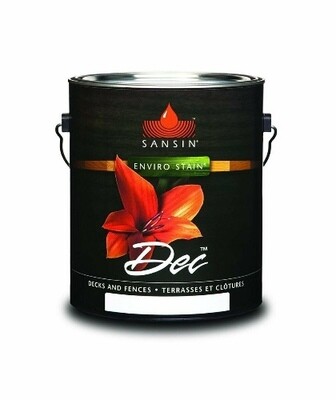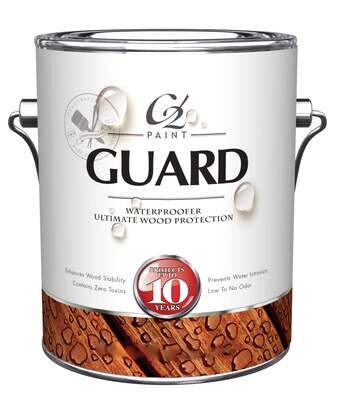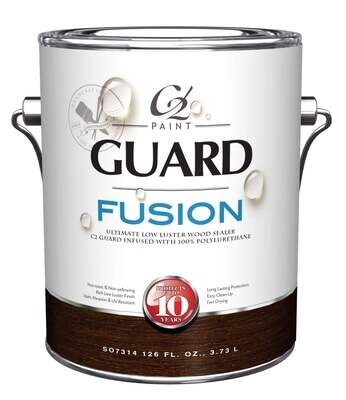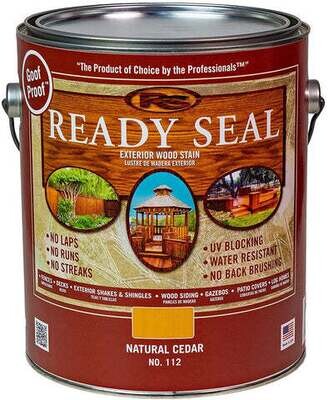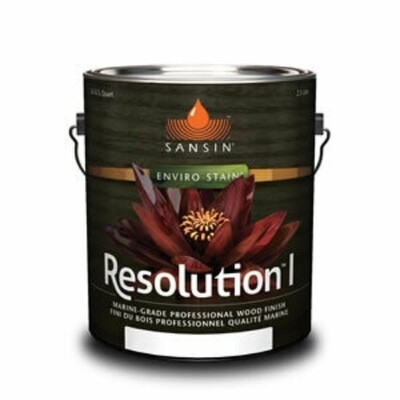Exterior Stains
Exterior stain is designed to enhance the natural coloring of any wooden surfaces while also protecting them from the elements. Ultraviolet light, water, and even fungi can wreak havoc on exterior wooden surfaces. Exterior stains provide protection from all of these factors while also potentially altering the appearance if desired. It all begins by deciding if you need water-based or oil-based stain, then honing in on the specific type of stain for your project.
Water-Based or Oil-Based: Which One is Right for Me?
All exterior stains can be broken down into two categories: water-based and oil-based. The type of wood, previous treatments, and weather all determine which option is best for your project. Consider each of the following factors to help you decide:
- Type of wood: Some types of wood have natural resistances to rotting, such as cedar, redwood, and cypress. Any type of wood known to resist wood rot will do great with water-based exterior stain.
- Previous wood treatment: If the wooden surface in question has already been treated, you need to take this into consideration otherwise the new stain may not adhere. If the previous treatment was an oil-based stain, you can use either oil or water. However, if it was stained with a water-based stain, you should avoid oil-based stains as they will struggle to adhere to the wood.
- Weather exposure: How exposed to the weather is the given surface? If the surface is going to be directly exposed to rain, wind, and sunlight, oil-based will provide stronger protection against each of these factors. Water-based will still protect the surface, but oil-based is typically recommended.
Types of Exterior Wood Stain
There are four types of wood stain to consider after you’ve decided it’s time to stain exterior wooden surfaces. Each type of stain has its own benefits and drawbacks. The four common types of exterior wood stain are:
- Clear toner: This type of stain contains ground iron pigments, known as trans oxides, that block the sun without significantly obscuring the wood’s grain. Clear toner typically applies a warm tint and doesn’t leave a film on the surface. However, clear toner needs to be recoated annually. Sansin stain is known for producing clear toner with a mild tint for those who wish to retain the natural look of the wood.
- Semisolid: With more pigment than clear toner, this option is intended to modify the color of the surface along with providing the protective benefits of staining. Semisolid does not have a surface film, so it won’t peel. Benjamin Moore Arborcoat exterior semisolid paint is ideal for creating a uniform look across all wooden surfaces, such as a backyard that has a deck, wooden fence, and wooden siding. Semisolid staining needs to be reapplied every 2-4 years.
- Semitransparent: Containing just enough pigment to change the color noticeably, semitransparent won’t obscure the wood’s grain. It does not have a surface film and needs to be reapplied every 2-3 years.
- Solid color: This looks essentially the same as flat paint and it will hide the wood’s grain, but not the wood’s texture. It creates a film that may peel if not applied properly. It’s the longest-lasting stain, only needing to be reapplied every 5-7 years.
Selecting the right type of stain is the first step toward renovating your exterior wooden surfaces. Every type of stain will protect wooden surfaces, assuming it’s properly applied. Decide which type of wooden stain is ideal for your project and then hone in on the exact brand and tint that’s right for you.
Need help with how much to buy?
Use a paint calculator!
Find your perfect colour
using our colour guide.
On-screen and printer colour representations may vary from actual paint colours.
All Rights Reserved | Benjamin Moore Retailer | In Partnership with CCC


